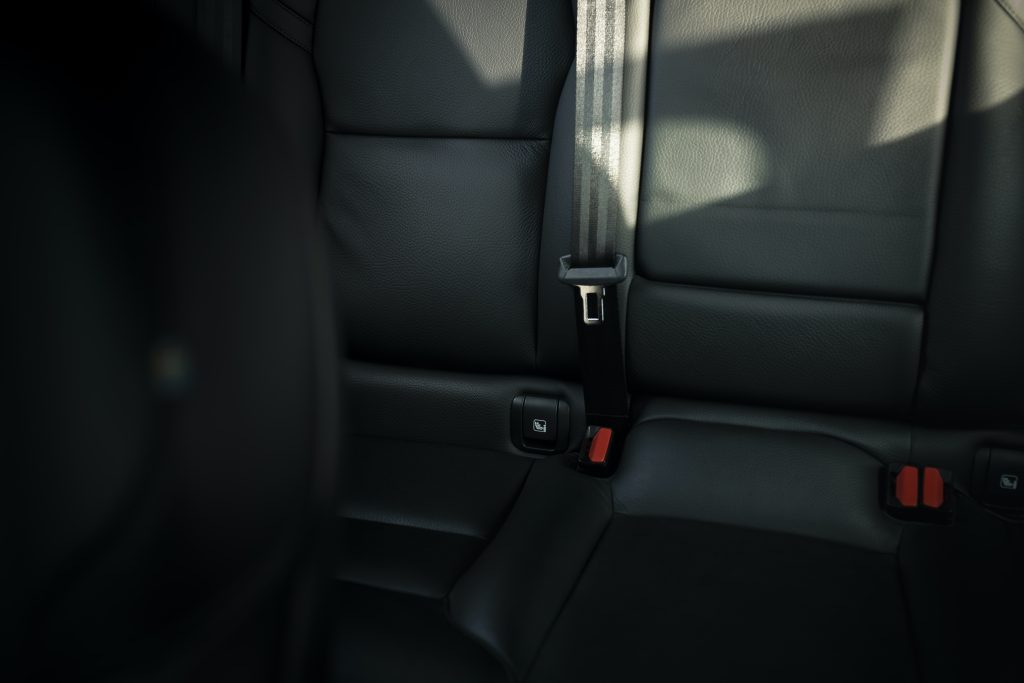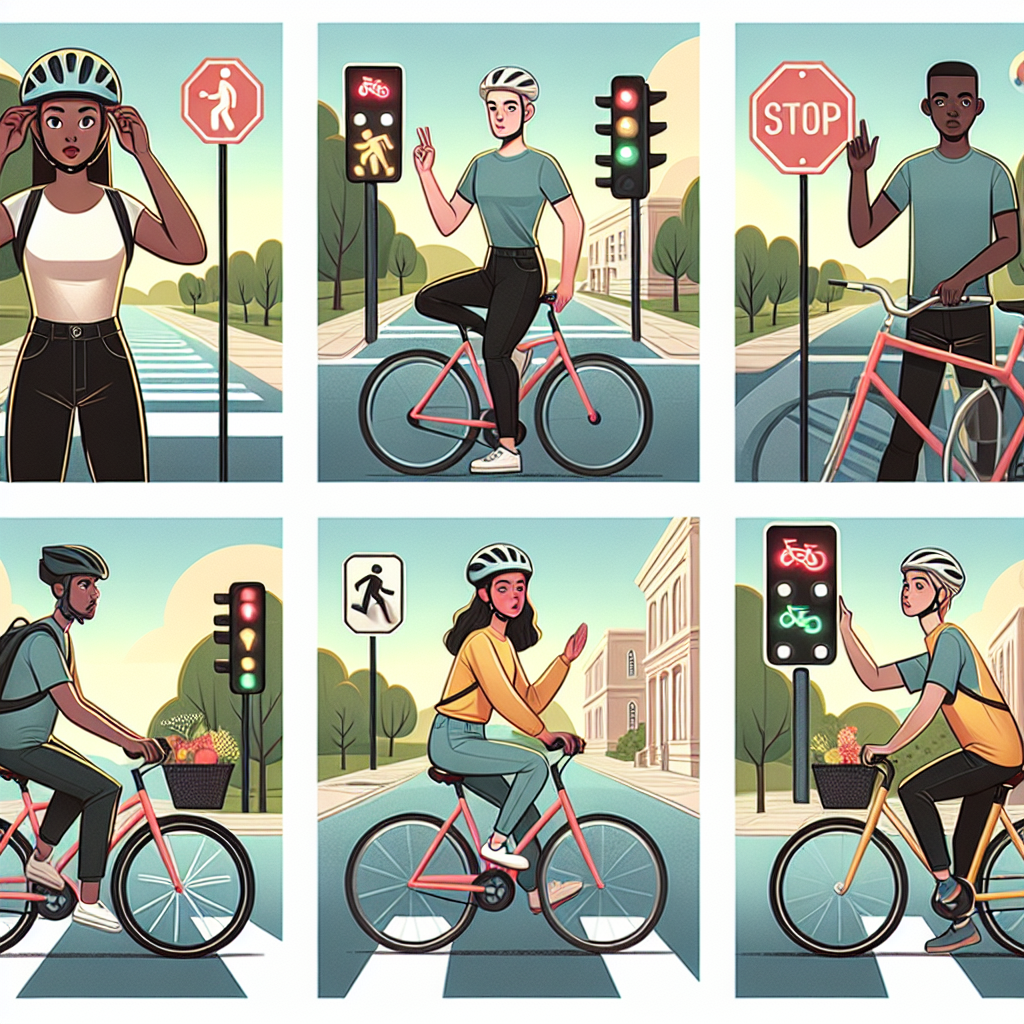Whether you’re an experienced cyclist or just starting out, prioritizing safety is crucial every time you hop on your bike. In this article, we’ll share five essential biking safety tips that will help you stay protected and enjoy your ride to the fullest. From choosing the right helmet to understanding hand signals, these tips will provide you with the knowledge and tools needed to navigate the roads confidently and safely. So, buckle up your helmet and get ready to hit the road with peace of mind! Biking safety is of utmost importance when you hit the road on your two-wheeler. Whether you’re a seasoned cyclist or just starting out, there are key factors to consider in order to ensure a safe and enjoyable riding experience. In this comprehensive guide, we’ll cover everything you need to know about choosing the right bike, wearing the proper gear, understanding traffic laws, practicing defensive riding, and maintaining your bike.
Choosing the Right Bike
Consider Your Riding Style
When choosing a bike, it’s essential to consider your riding style. Are you planning to ride long distances on paved roads? Or do you prefer off-road adventures on rough terrain? Understanding your riding style will help you determine whether a road bike, mountain bike, hybrid, or cruiser is the best fit for you. Each type of bike is designed with specific features that cater to different riding conditions and preferences. Take the time to evaluate what type of riding you’ll be doing the most to ensure you select the right bike.
Check the Bike Size
A properly fitting bike is crucial for comfort and control. Riding a bike that is too big or too small for your body can lead to discomfort, poor handling, and even injury. When choosing a bike, refer to the manufacturer’s size guide to determine the appropriate frame size for your height and inseam length. It’s also advisable to test ride different bikes before making a final decision. By doing so, you can get a feel for how each bike handles and whether the size is a good match for your body.
Inspect the Bike’s Condition
Before purchasing a bike, it’s important to thoroughly inspect its condition. Check for any signs of damage or wear and tear, such as cracks in the frame, bent wheels, or rusted components. Ensure that the brakes and gears are in good working order. If you’re unsure about evaluating the bike’s condition, it’s always a good idea to seek the assistance of a professional bike mechanic. Remember, a well-maintained bike will not only provide a safer ride but also save you from costly repairs down the line.

Wearing the Right Gear
Wear a Properly Fitted Helmet
One of the most important pieces of gear a cyclist can wear is a properly fitted helmet. Head injuries are a common occurrence in cycling accidents, and wearing a helmet can significantly reduce the risk of severe injury or even death. When selecting a helmet, ensure that it fits snugly on your head without any gaps. It should sit level on your head and cover the forehead, with the chinstrap securely fastened. Remember to replace your helmet if it has been involved in a crash or has reached its expiration date, typically five years from the manufacturing date.
Use Reflective Clothing or Accessories
To enhance your visibility on the road, especially during low-light conditions, it’s essential to wear reflective clothing or use reflective accessories. Reflective materials can help make you more visible to motorists, reducing the risk of accidents. Consider investing in reflective vests, jackets, or ankle straps, which can easily be worn over your clothing. Additionally, attaching reflective accessories, such as lights or reflectors, to your bike can also increase your visibility from all directions.
Protect Your Hands and Feet
Just as wearing a helmet is crucial for protecting your head, it’s equally important to protect your hands and feet while cycling. Gloves provide several benefits, such as grip, comfort, and protection in case of a fall. They can also shield your hands from wind and cold temperatures. When it comes to your feet, wearing proper cycling shoes or sneakers with a sturdy sole and good traction can enhance your pedaling efficiency and provide better control over your bike. Additionally, consider investing in cycling-specific socks that wick away moisture and provide extra cushioning.

Understanding Traffic Laws
Know Basic Traffic Signals
Before hitting the road, it’s essential to familiarize yourself with basic traffic signals. This knowledge will help you navigate intersections and communicate your intentions to other road users. Understand the meanings of traffic lights, such as red for stop, green for go, and yellow for caution. Additionally, be aware of hand signals used by cyclists to indicate turns or stops. By following these traffic signals, you can ensure a smoother flow of traffic and minimize the risk of collisions.
Observe Right-of-Way Rules
Knowing and observing right-of-way rules is crucial for safe cycling. Yield to pedestrians at crosswalks and respect their right to cross the road. When approaching an intersection, be aware of vehicles and yield to those with the right of way. Additionally, familiarize yourself with any local regulations or specific rules applicable to cyclists, such as bike lanes or shared roadways. By understanding and respecting right-of-way rules, you can contribute to a harmonious and safe road environment.
Follow Traffic Flow
To enhance your safety, it’s important to follow the flow of traffic. Ride in the same direction as motor vehicles, using the right-hand side of the lane. Avoid riding against traffic, as it increases the likelihood of accidents and can confuse other road users. Observe the speed limit and adjust your speed accordingly to maintain a steady and predictable flow. Signal your intentions clearly and in advance, whether it’s to change lanes or make a turn. By riding with the flow of traffic, you’ll increase your visibility and reduce the risk of collisions.

Practicing Defensive Riding
Stay Visible to Drivers
One of the key aspects of defensive riding is ensuring that you remain visible to drivers at all times. Wear bright and contrasting colors that stand out from your surroundings, especially during daylight hours. Use front and rear lights on your bike, even during the day, to make yourself more visible to motorists. When riding at night or during low-light conditions, make sure your lights are set to a steady or flashing mode to grab the attention of other road users.
Maintain a Safe Distance from Vehicles
Maintaining a safe distance from vehicles is crucial for avoiding accidents. Ideally, you should allow at least three feet of space between yourself and passing cars. This provides a buffer zone in case a vehicle drifts or swerves unexpectedly. When riding in traffic, be cautious of vehicles that are turning or changing lanes. Avoid riding closely beside large vehicles, such as trucks or buses, as they have larger blind spots. By keeping a safe distance from vehicles, you’ll have more time to react and maneuver if necessary.
Anticipate and React to Potential Hazards
Defensive riding involves anticipating potential hazards and taking proactive measures to avoid them. Keep an eye out for road conditions, such as potholes, debris, or wet surfaces, and adjust your speed or route accordingly. Be aware of parked cars and watch for doors opening suddenly. Pay attention to the behavior and movements of other road users, including pedestrians, cyclists, and drivers, and be prepared to react to unpredictable situations. By staying alert and practicing defensive riding techniques, you can reduce the likelihood of accidents and ensure your safety on the road.

Maintaining Your Bike
Check Your Brakes Regularly
Regular brake maintenance is essential to ensure your bike stops reliably when you need it to. Inspect your brake pads for wear and replace them if they are worn down to the recommended thickness. Adjust the brake cable tension to provide optimal stopping power without excessive brake drag. Test your brakes before every ride to ensure they are functioning properly. If you notice any issues, such as squealing, grinding, or a spongy feel to the brakes, have them inspected and serviced by a professional.
Keep the Tires Inflated and in Good Condition
Maintaining proper tire inflation and keeping your tires in good condition is crucial for a safe and comfortable ride. Check your tire pressure regularly and ensure it matches the recommended PSI (pounds per square inch) indicated on the sidewall of the tire. Inspect your tires for any signs of wear, such as cuts, bulges, or excessive tread wear. Replace any damaged or worn-out tires promptly to avoid potential blowouts or loss of control while riding.
Ensure Proper Chain Lubrication
A properly lubricated chain is vital for smooth shifting and efficient power transfer. Inspect your chain regularly for signs of dirt, grime, or rust. Clean your chain using a chain cleaner and apply a suitable lubricant according to the manufacturer’s instructions. Excessively dry or dirty chains can lead to poor shifting performance and premature wear on other drivetrain components. By ensuring proper chain lubrication, you’ll prolong the lifespan of your drivetrain and enjoy a smoother and more reliable ride.
In conclusion, prioritizing biking safety is crucial for a positive and enjoyable riding experience. By choosing the right bike, wearing the appropriate gear, understanding traffic laws, practicing defensive riding techniques, and maintaining your bike, you can ensure your safety on the road. Remember, it’s always a good idea to stay informed, keep learning, and stay up to date with the latest biking safety practices. So grab your helmet, put on your reflective clothing, and enjoy the freedom and thrill of cycling while keeping safety as your top priority. Happy riding!



